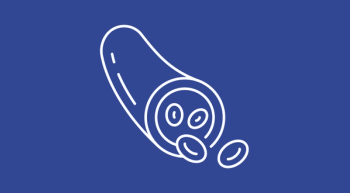
Patient Preferences Change Throughout Disease Process
In different stages of multiple myeloma treatment, patients' priorities may change.
Shared decision making between providers, patients, and their caregivers will be crucial moving forward in the
According to a recent study Raje was involved in, patients are very dependent on their healthcare providers at the time of diagnosis. While there are fewer options in the frontline setting, they tend to want treatment soon, and favor efficacy over toxicity.
Then, in the later settings, patients have more choices, and they tend to go over toxicities more with their providers, weighing out the pros and cons of their options.
TRANSCRIPTION
We looked at patients through different stages. We looked at patients at the time of diagnosis, and what we found was that at the time of diagnosis patients were fairly dependent on their healthcare providers. They were "go go go" and wanted to get the treatment done. There were not a lot of options, and I think that is pretty straightforward when you think about multiple myeloma. When it comes to newly diagnosed patients, we know we give them a triplet and we don't necessarily talk about toxicity as much because you want that efficacy. You want them to feel better. That's something that actually did pan out in this study.
When it comes to second-, third-, fourth-line treatment, there was a little bit of a difference. The difference here was that there was a lot more discussion on toxicity and there were a lot more choices. That's pretty much what we see in the field as well. You put not just patients but 5 myeloma experts in a room, you're not going to get the same uniform answer of this is how I would treat my patients. I think we saw that in this patient-related outcomes study. We saw that they did focus a little more on toxicity and they were given more choices as opposed to the frontline setting.
We do see differences and I think these differences are largely because of the fact that we do have choices. If we just had the one drug, we would not have this discussion. But the good news is that in myeloma we have multiple different treatment options that we can offer, and patients are engaging in that kind of a conversation.
Newsletter
Knowledge is power. Don’t miss the most recent breakthroughs in cancer care.

















































































